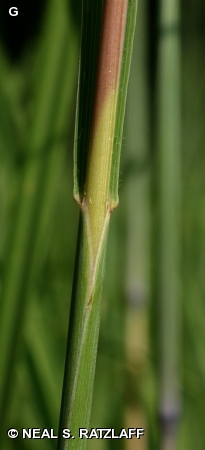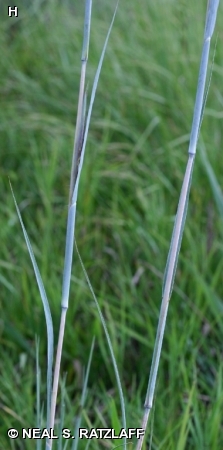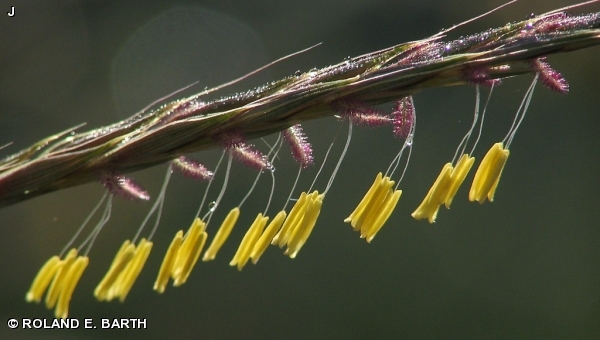
Usually 3-6 feet tall, this native perennial may occasionally reach 9 feet in favorable sites. It grows in bunches or spreads by rhizomes to form turfs. The numerous leaves are up to 20 inches long and less than 1/2 inch wide, usually with a few long hairs near the base (F). As the common name suggests, the stout, rounded stems often have areas of bluish or purple coloration (E,H). At the tip of the stem are clusters of 2-7 linear flower stalks from 2-4 inches long. Each stalk originates from a common point, the cluster resembling a “turkeyfoot” (A), the origin of another common name for this species. The small, wind-pollinated flowers consist of bright yellow anthers and purplish stigmas (I,J). Stems turn a rich reddish-brown at maturity (D).
Upland and lowland prairies and roadsides. It is often the dominant grass in lowland prairie sites. Big Bluestem is common in all prairie restorations at Neale Woods and in the floodplain prairie planting at Fontenelle Forest.
Maximum flowering occurs in late July through much of August. Flowering may persist in small amounts well into September.
Big bluestem was the dominant grass in much of the tallgrass prairie which once covered most of eastern Nebraska.
The Omaha-Ponca laid stems of “red hay” over the wooden framework of their lodges for support before covering them with earth.
The content of NatureSearch is provided by dedicated volunteer Naturalists of Fontenelle Forest who strive to provide the most accurate information available. Contributors of the images retain their copyrights. The point of contact for this page is: Neal Ratzlaff.









